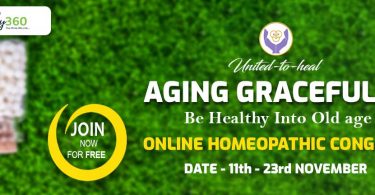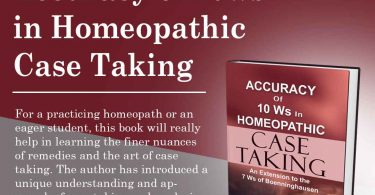
“Hahnemann Revisited: A Textbook of Classical Homeopathy for the Professional“ is a comprehensive guide to classical homeopathy, deeply rooted in Samuel Hahnemann’s principles. The book serves as an essential resource for practitioners and students of homeopathy, emphasizing the core philosophy and practice of the art.
Key highlights of the book include:
In-depth Explanation of Hahnemannian Principles: It revisits the Organon of Medicine and focuses on Hahnemann’s methodologies, especially the application of the single remedy and minimum dose.
Case Management: The book provides insights into case-taking, understanding patients holistically, and choosing the correct remedy.
Vital Force and Miasms: It delves into the concept of vital force and miasms, offering clarity for those seeking to deepen their understanding of chronic diseases.
Practical Tools: Luc De Schepper includes tips for remedy selection, potency choice, and follow-ups, ensuring applicability in modern clinical practice
The book is particularly valued for its clarity and the way it bridges the gap between classical homeopathy and contemporary challenges. If you’re interested in exploring fundamental and advanced concepts in classical homeopathy, this text would be a valuable addition to your library.
“Hahnemann Revisited” by Luc De Schepper is highly regarded as a comprehensive textbook for classical homeopathy. It covers key foundational topics such as the principles of homeopathy, the healing process, and chronic miasms. This book also dives deep into advanced concepts like LM potencies, miasmatic prescribing, case management, and practical insights through case studies, historical perspectives, and methods to understand the materia medica effectively.
Some notable highlights of the book include:
A detailed section on “Never Well Since” cases and intrauterine prescribing.
Appendices with sample forms and symptom-miasm charts. Professionals praise the book for its clarity, comprehensive scope, and practical utility
The book Hahnemann Revisited by Dr. Luc De Schepper is a comprehensive resource on classical homeopathy, widely praised for its depth and clarity. It covers topics such as LM potencies, chronic miasms, cancer treatment, suppression, and bowel nosodes. The book is divided into three sections: “The Foundation,” “The Healing Process,” and “The Chronic Miasms.”
Useful for budding homoeopaths and experienced practitioners, with its detailed insights making it a valuable addition to your library
Luc De Schepper’s Hahnemann Revisited: A Textbook of Classical Homeopathy for the Professional is a definitive guide that delves into classical homeopathy, firmly grounded in Samuel Hahnemann’s teachings. It is often regarded as one of the most detailed and practical modern textbooks for students and practitioners alike. Below is an elaborative overview of its contents and significance:
Structure and Themes
The Foundation
This section lays the groundwork for understanding homeopathy by revisiting Hahnemann’s principles, including the law of similars, vital force, and the single remedy approach. It explores foundational concepts like the Organon of Medicine and emphasizes practical application.
The Healing Process
A detailed exploration of the homeopathic healing journey, addressing suppression, acute and chronic diseases, and the importance of observing subtle signs in patients. Schepper outlines the process of understanding case dynamics and the importance of individualization in treatment.
The Chronic Miasms
This segment dives into Hahnemann’s chronic disease theory, offering insights into miasms like psora, syphilis, and sycosis. Schepper discusses how these influence susceptibility and prescribing, making this section invaluable for treating complex chronic conditions.
Key Features
Detailed Analysis of LM Potencies
The book provides a comprehensive guide to understanding and using LM (Q) potencies, a lesser-known aspect of Hahnemann’s later works. This offers clarity to practitioners seeking precision in their prescriptions.
Integration of Case Studies
Numerous case studies are included to illustrate practical applications of classical principles. They serve as a learning tool for real-world scenarios.
Materia Medica and Learning Tools
Guidance on studying and mastering the materia medica, supplemented with practical examples and symptom charts.
Homeopathy and Cancer
The book addresses cancer treatment, shedding light on the scope and limitations of homeopathy in such cases.
Unique Prescribing Techniques
It discusses intrauterine and “Never Well Since” prescribing, which helps in tackling deep-seated issues originating from early life events.
Historical and Philosophical Insights
Schepper provides historical context to homeopathy’s evolution and highlights its philosophical underpinnings, making the book a rich blend of history, science, and art.
As a foundational text, it provides clarity on the Organon, materia medica, and chronic diseases.
Practitioners: Advanced concepts like LM potencies and miasmatic prescribing are invaluable for seasoned homeopaths, for its structured presentation of classical homeopathy., for its clarity and depth.
Significance
Hahnemann Revisited bridges classical theory with modern application, making it a timeless resource. Whether you are revisiting foundational principles or exploring advanced topics, this book is a must-have for any serious student or practitioner of homeopathy. It seamlessly combines the wisdom of the past with insights for today’s clinical challenges, ensuring it remains a cornerstone of homeopathic literature for years to come.
Dr. Raksha Thakker employs a mind-focused method in homeopathy, emphasizing the understanding of mental and emotional states as key to case-taking and remedy selection. Her approach integrates traditional Hahnemannian principles with modern insights into patient psychology. By focusing on peculiar and individualized mental symptoms, such as fears, delusions, and emotional triggers, her method aims to uncover the deeper roots of illness. She also emphasizes building a strong therapeutic relationship to facilitate effective healing.






